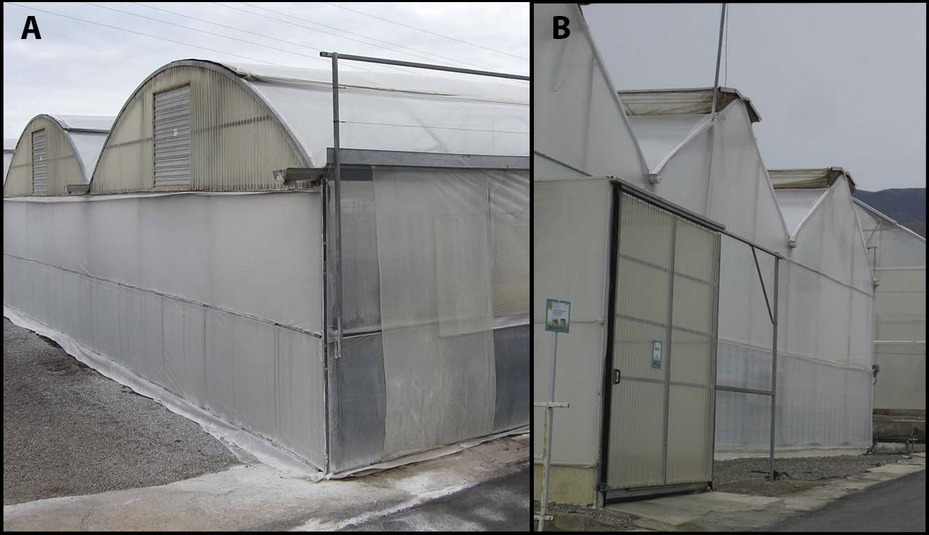Environmental Geology in Spain - Diving into a plastic ocean in Almería
21.02.2016
Newsfeed of the day
by Andrea Mazón
Diving into a plastic ocean in Almería
Almería is known for having a huge amount of greenhouses spread out over valleys or flat areas close to the coast. The resulting landscape is a white ocean of plastic greenhouses.
We had the opportunity to visit an experimental greenhouse Centre “Las Palmerillas” in Almería. Here, we were introduced to three different greenhouse types, how fruits and vegetables are grown, and techniques for controlling pests in greenhouses.
The greenhouse types are: parral, multi-tunnel and double chapel.
The parral greenhouse walls are made of three layers: twisted wire, plastic layer, and twisted wire again (photo below). The roof is flat and the ventilation is poor. This is the cheapest greenhouse (≈ 10€/m2) very easy to build and repair, compromising 80% of Almería´s greenhouses.
The multi-tunnel greenhouse has a metal structure with plastic layers in between. The roof is convex with a little window in the middle, allowing for good ventilation. This implies a higher density of plants and a higher production in the greenhouse. In case of plastic damage, the whole damaged wall needs to be replaced, which generates high costs.
The double chapel greenhouse is also made of a metal structure with plastic layers tensed in between. The roof is convex-sharp with a vertical and horizontal opening. This special ventilation is difficult to build and also very expensive - a reason why this type of greenhouse is rarely seen.
A. Multi-tunnel greenhouse B. Double chapel greenhouse.
The three greenhouse types can be found all over the landscape of Almeria. After our visit to the greenhouse centre we were able to distinguish the different types from one another.


